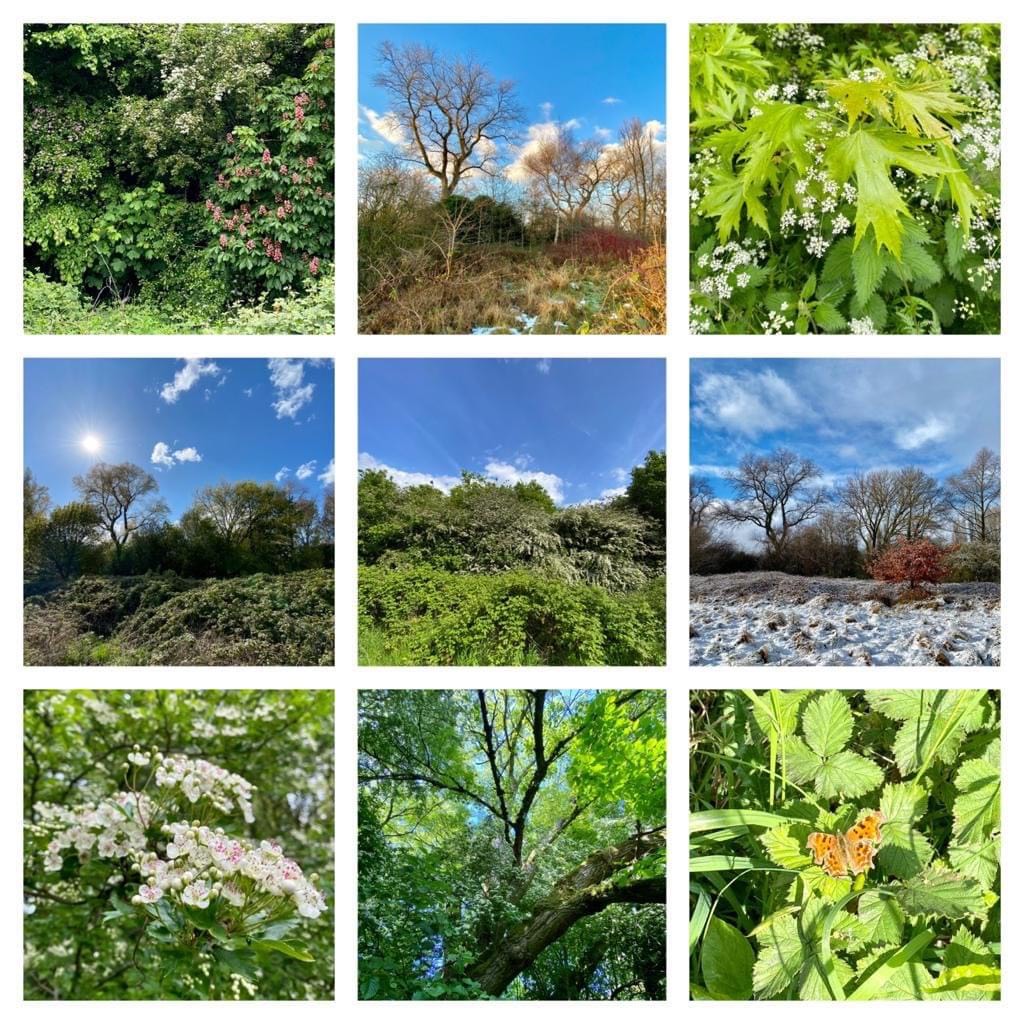There are a significant number of hedgerows surrounding Ryebank Fields. In Spring and Summer, they are particularly spectacular with abundant Hawthorn blossom tumbling down to the ground.
The largest continuous section of hedgerow lies between Ryebank Fields and the Longford Park conservation area and is approximately 270 metres long. To coincide with the first ever National Hedgerow week, in May 2021, it was surveyed by the Greater Manchester Ecology Unit (GMEU) who confirmed that it fulfils a number of criteria set by the government that make it a hedgerow of ‘importance’.
These include:
- Its age: the hedgerow has been assessed, with the help of the Greater Manchester Archeological Advice Service (GMAAS) and is considered to be 100 years old.
- It contains a variety of woody species, including Hawthorn, Elder, Holly, Hazel, Lime and Cherry.
- It contains a rare native Black Poplar tree. (See our separate article about this very special tree).
- The hedgerow also intersects an archaeological feature, namely the Nico Ditch. (See our separate article about this historical feature).
Being a hedgerow of ‘importance’ means it is protected by law.
The Friends of Ryebank Fields have also surveyed the hedgerow and taken part in The Great British Hedgerow Survey. This is run by PTES (People’s Trust for Endangered Species) who are compiling a national data bank on British Hedgerows and Ryebank Field’s hedgerows are a part of it.
Hedgerows support a huge eco-system and are alive with birds and insects. If you are lucky, you may see hedgehogs, foxes and other mammals.
By Julie Ryan
